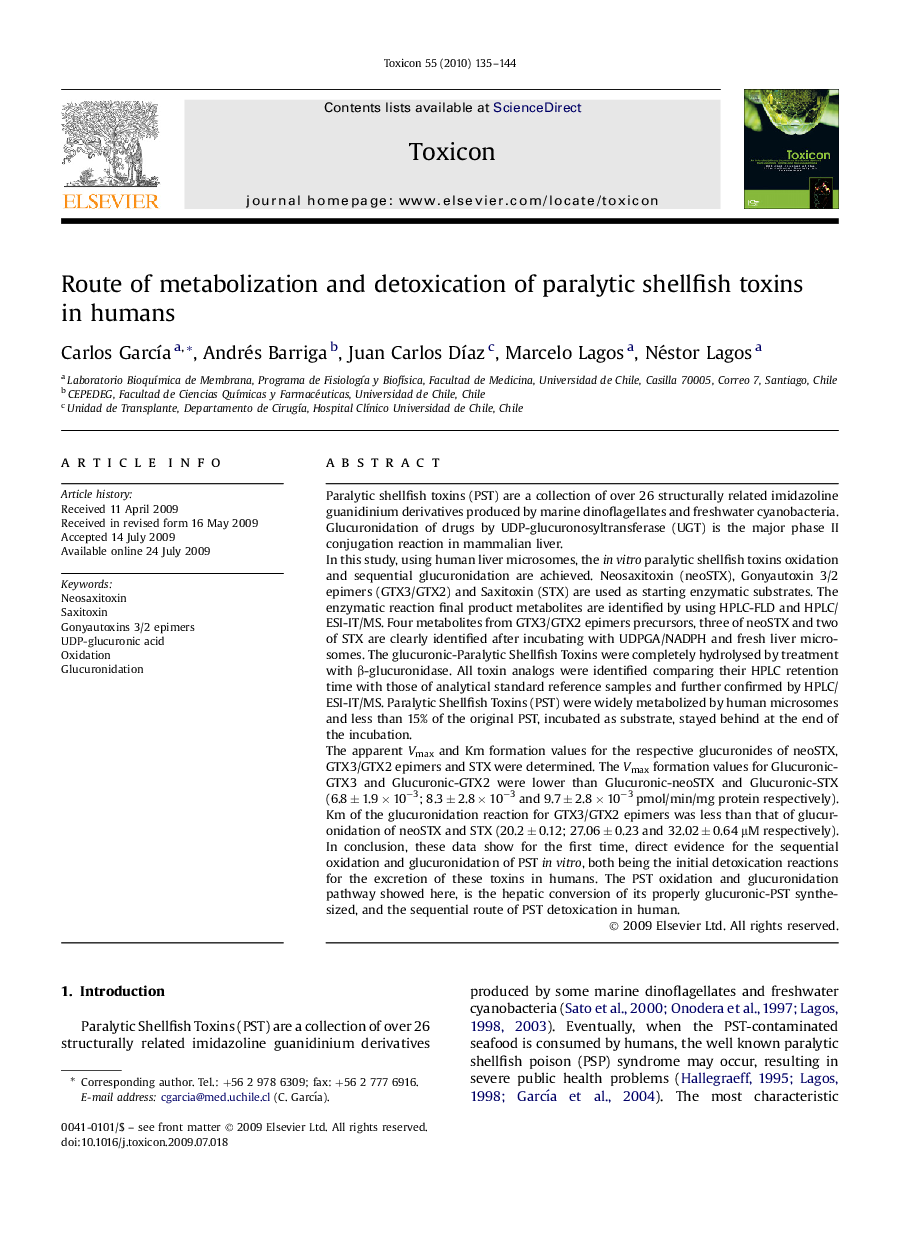| کد مقاله | کد نشریه | سال انتشار | مقاله انگلیسی | نسخه تمام متن |
|---|---|---|---|---|
| 2065456 | 1076922 | 2010 | 10 صفحه PDF | دانلود رایگان |

Paralytic shellfish toxins (PST) are a collection of over 26 structurally related imidazoline guanidinium derivatives produced by marine dinoflagellates and freshwater cyanobacteria.Glucuronidation of drugs by UDP-glucuronosyltransferase (UGT) is the major phase II conjugation reaction in mammalian liver.In this study, using human liver microsomes, the in vitro paralytic shellfish toxins oxidation and sequential glucuronidation are achieved. Neosaxitoxin (neoSTX), Gonyautoxin 3/2 epimers (GTX3/GTX2) and Saxitoxin (STX) are used as starting enzymatic substrates. The enzymatic reaction final product metabolites are identified by using HPLC-FLD and HPLC/ESI-IT/MS. Four metabolites from GTX3/GTX2 epimers precursors, three of neoSTX and two of STX are clearly identified after incubating with UDPGA/NADPH and fresh liver microsomes. The glucuronic-Paralytic Shellfish Toxins were completely hydrolysed by treatment with β-glucuronidase. All toxin analogs were identified comparing their HPLC retention time with those of analytical standard reference samples and further confirmed by HPLC/ESI-IT/MS. Paralytic Shellfish Toxins (PST) were widely metabolized by human microsomes and less than 15% of the original PST, incubated as substrate, stayed behind at the end of the incubation.The apparent Vmax and Km formation values for the respective glucuronides of neoSTX, GTX3/GTX2 epimers and STX were determined. The Vmax formation values for Glucuronic-GTX3 and Glucuronic-GTX2 were lower than Glucuronic-neoSTX and Glucuronic-STX (6.8 ± 1.9 × 10−3; 8.3 ± 2.8 × 10−3 and 9.7 ± 2.8 × 10−3 pmol/min/mg protein respectively). Km of the glucuronidation reaction for GTX3/GTX2 epimers was less than that of glucuronidation of neoSTX and STX (20.2 ± 0.12; 27.06 ± 0.23 and 32.02 ± 0.64 μM respectively).In conclusion, these data show for the first time, direct evidence for the sequential oxidation and glucuronidation of PST in vitro, both being the initial detoxication reactions for the excretion of these toxins in humans. The PST oxidation and glucuronidation pathway showed here, is the hepatic conversion of its properly glucuronic-PST synthesized, and the sequential route of PST detoxication in human.
Journal: Toxicon - Volume 55, Issue 1, January 2010, Pages 135–144